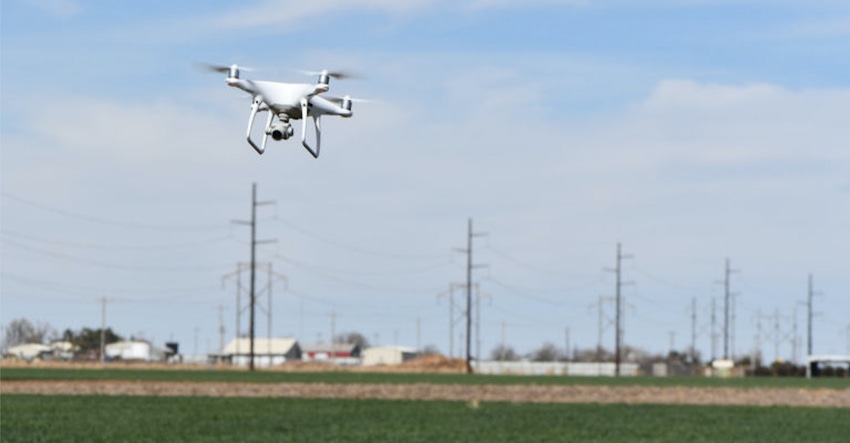
Automation is the future. That was apparent from the presentations delivered during the Cotton Engineering Systems portion of the 2022 Beltwide Cotton Conferences. From robotic cotton harvesters, to drone sprayers to lasers that kill weeds, technology that once seemed out of reach is now just around the corner. Below are highlights from conference presentations on automation research in cotton production.
Robotic cotton harvesters
With the new John Deere cotton harvester coming in at a $1 million price tag, a fleet of small robotic cotton harvesters could be a more efficient option for farmers who grow fewer cotton acres or who rotate to other crops from year to year.
Hussein Gharakani, graduate research assistant with Mississippi State University, shared the potential benefits of more automation in cotton harvesting. Since robotic harvesters mimic human picking, cotton could be harvested in multiple cycles, and bolls could be picked as soon as they open. Robotic harvesters could eliminate the need for defoliation, reduce incidence of boll rot and reduce soil compaction by limiting passes of heavy equipment across the field.
Gharakani presented results from studies on the design and performance of robotic cotton harvesting end-effectors. An end-effector is the device attached to the end of a robot’s arm that acts as a hand.
End effectors are a key part of the robotic cotton harvester, as they will actually pick the cotton. Scientists are evaluating different end-effector prototypes to find a design that will pick seed cotton quickly and cleanly without also picking too much trash or consuming too much power. Their work is bringing robotic cotton harvesters closer to reality.
UAV’s detect weeds, trash
Farmers are realizing the benefits of using drones to apply pesticides and fungicides. They can spray with higher accuracy than most boom sprayers or piloted aircraft and can still get across fields when weather would prevent other methods.
At Texas A&M University, researchers are studying the possibility of spot spraying late season weed escapes in cotton using a remotely piloted drone. Using a camera mounted to the drone, images of waterhemp escapes were collected and tagged with GPS locations. A drone sprayer returned to the location to spray the identified weed.
While more work is needed to train software on distinguishing a weed from a cotton plant (the identification was only 60% accurate) the study is promising. Ubaldo Torres, a master’s student at Texas A&M said work would continue on the project to improve image analysis methods and also compare efficacy of a contact herbicide to a systemic herbicide in this application system.
Researchers at the USDA-ARS Cotton Ginning Research Unit in Stoneville, Miss. are using drones to detect plastic contaminants in cotton fields.
Using cameras mounted to UAV’s, these scientists are creating an image database of litter commonly blown into cotton fields — mainly plastic bags, but also cans, bottles and other trash. The image database will be a learning tool with which researchers will then train an AI software model to detect multiple types of contaminants.
The ultimate goal is to develop tools that will allow producers to map plastic contamination in a cotton field and remove it prior to harvest.
Laser weed removal
Using lasers to kill weeds could be an alternative to herbicides and is being evaluated at the University of Georgia. There scientists are designing a system that will target and kill weeds autonomously while moving on a rover. By training computers to recognize images of weeds, the roving laser will find targeted weeds and zap them in the field.
To achieve the required performance, the system uses a high-power CO2 laser with an output of 40 watts. This output is needed to effectively kill pigweed. Of the readily available laser types, it was most effectively absorbed by the weeds, requiring the least time to kill.
Because the laser is large and power-intensive, it requires a cooling system to maintain optimal operating temperature.
About the Author(s)
You May Also Like






